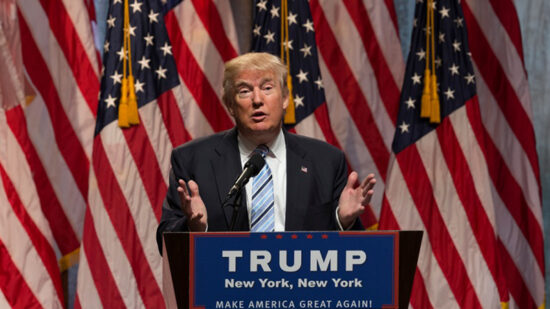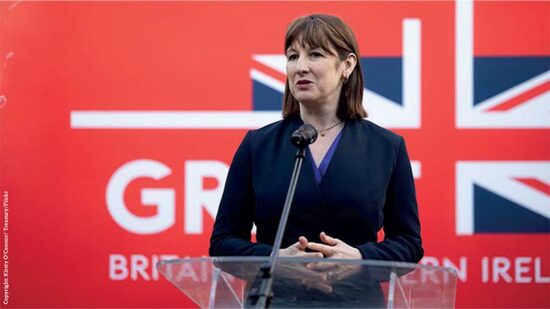Chinese markets have risen on the back of a wide-ranging stimulus package aimed at guiding economic growth back to its 5% target, announced by the People’s Bank of China (PBoC) at a joint press conference with Chinese regulators yesterday.
The measures include lowering benchmark interest rates and a 50bps cut to the reserve requirement ratio (RRR), as well as cuts to mortgage rates and downpayments for house buyers.
The PBoC has also pledged various monetary policy and financing tools to support the stockmarket, including using re-lending tools to guide banks to support listed companies’ share buybacks.
The Shanghai SSE index jumped 4.15% at close last night in the wake of the announcement, while the Hang Seng rose 4%.
See also: Interest rates stay at 5% as ‘dark clouds gather once again’ over the UK
Reacting to the announcement, Matt Britzman, senior equity analyst at Hargreaves Lansdown, said while the Chinese central bank is not going “all-in” on stimulus, it’s a clear sign that it’s not going to sit back and watch growth disappoint.
Peiqian Liu, Asia economist at Fidelity International, believes the measures are a welcome change for Chinese markets.
“We believe these easing measures are positive surprises to markets and will be supportive of sentiment in the short term. Previously, markets have been expecting a more incremental and gradual approach in monetary policy easing, but this one-off announcement to lower benchmark rates signals the importance China places in supporting domestic demand.
“We also note that today’s easing has not signalled a change of course, which is a coordinated effort to restructure the economy with a smooth transitioning to achieve high quality growth via controlled stabilisation.
“Looking forward, PBoC Governor Pan has given clear forward guidance and signalled the potential for further RRR cuts and rate cuts, if appropriate. We welcome the clear communication on monetary policy and expect China to continue with further easing, especially after many central banks in developed markets have started their own easing cycles, which gives the PBoC more room to do the same while still maintaining exchange rate stability in the medium term.”
See also: Federal Reserve cuts interest rates by half a percentage point
Will the measures boost growth long term?
China has been searching for solutions to its economic growth challenge for some time, and stimulus measures have failed to boost growth in the past, says Russ Mould, investment director at AJ Bell.
“It’s gone from being a trailblazer with supersonic economic expansion to a country whose batteries were close to running out of energy. It’s now gone all-in with its bet on getting the economy back into top gear and that’s driven the mother of all rallies on the Chinese stockmarket.
“[Market reaction indicates] that investors are pleased with plans to lower borrowing costs and allow banks to increase their lending. That had a direct read-across to the FTSE 100 and its army of commodity producers who should benefit from greater economic activity in China and for London-listed companies which do business with consumers in the country including Burberry and Prudential.
“The Chinese government doles out economic incentive measures as freely as parents bribe children with treats to get chores done. They work for a few minutes but the interest quickly wanes. Whether the latest stimulus programmes produce longer-lasting gains for the Chinese economy remains to be seen, and history suggests we should have low expectations.”
Robert Gilhooly, senior emerging markets economist at abrdn, added: “China has stepped up with a more aggressive set of policy easing measures. A stronger currency and Fed rate cuts are likely to have helped spur action, as has the acknowledgement that this year’s growth target may not be achieved.
“Crucially, the PBOC also appears to have jettisoned its financial stability objections to lower rates, instead opting to protect banks net interest margins (NIMs) via deposit rate cuts. It is now effectively condoning falls in long-dated yields (which its mini ‘reverse operation twist’ had previously attempted to lean against).
“Compared to the incremental approach we have become accustomed to – which even saw one key policy rate adjusted by as little as 5bp on one occasion – today’s package is more meaningful, but beating low expectations is a far cry from a package that will conclusively turn around the economy and market sentiment.
“The 50bp cut to existing mortgage holders’ borrowing costs is the closest thing we’ve had to a fiscal transfer for households. But other measures to support the property market still appear unlikely to deal with incomplete apartments, which ultimately need someone (local or central government) to bear a substantial fiscal cost. Overall, household spending is likely to remain constrained by the negative wealth effect from falling house prices and a weak labour market.”
This story was written by our sister title, Portfolio Adviser








